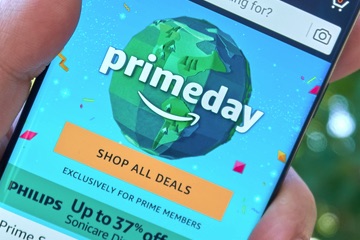While Amazon does not provide sales data for its Prime Days, it did state that during the 48-hour 2019 event on July 15 and 16, sales surpassed the 2018 Black Friday and Cyber Monday revenues combined.
Prime members purchased more than 175 million items throughout the two days this year. Prime Day last year was only 36 hours, so it is not surprising that sales this year were higher.
Popular Items
In a press release, Amazon stated that Prime members in 18 countries purchased more than 175 million items. The best deals in the United States were for electronics, apparel, and home goods. LifeStraw personal water filters, Instant Pots, and DNA kits were the top-selling items. Prime members in the U.S. also bought more than 100,000 laptops, 200,000 televisions, and more than 1 million toys. In other countries, food and beverages were popular.
In the U.S., Amazon offered substantial discounts on Whole Foods items, trying to increase flat sales. Sales for non-perishable grocery items spiked two to three times over a typical day.
Amazon devices also sold well, and the top-selling items worldwide were Echo Dot, Fire TV Stick with Alexa Voice Remote, and Fire TV Stick 4K with Alexa Voice Remote. Other consumer electronics brands were also popular. Amazon sold out its inventory of the latest Apple Watch within the first 24 hours.
Best-selling items outside of the U.S. include:
- United Kingdom. Sony PlayStation Classic Console, Oral-B SmartSeries Electric Toothbrush, and Shark Vacuum Cleaner.
- The United Arab Emirates. Al-Ain Bottled Water, Ariel Laundry Detergent, and Fine Towel Tissue Roll.
- Spain. Yobola Wireless Bluetooth Headphones, Philips Multigroom Series 7000 All-in-One Trimmer, and DoDot Diapers.
- Singapore. Meiji Fresh Milk, Coca-Cola Zero Sugar Soft Drink, and Kleenex Clean Care Bath Tissue.
- The Netherlands. Mama Bear Diapers, SanDisk 128 GB Memory Card, and Philips Hue White and Color Ambiance Light.
- Mexico. Nintendo Switch, HP Monitor 22w Borderless, and Nautica Travel Sport Eau de Toilette Spray.
According to CNBC, Amazon required many brands to increase their advertising spending on the site during the two Prime Days, some by 100 percent. Merchants were warned about losing market share if they did not comply, and several brands used the uptick in advertising to promote exclusive offers or launch products.
Buyer’s remorse may come into play. In 2018 Adobe found that there was a whopping 30-percent increase in returns for items purchased on Prime Day, indicating that consumers get caught up in the buying frenzy and purchase things they later regret.
Prime Memberships
Amazon said it gained more Prime members on July 15 this year than any previous day and almost as many on July 16. However, not all of those new members are sticking around. Some appear to be canceling the membership the same day or the day after they make their purchases. Search intelligence firm Captify reported that internet searches for “Canceling Amazon Prime” were 18 times higher on Monday than the previous day.
For those who do not want to sign up for Prime, waiting can pay off. My own price check showed that the iRobot Roomba 690 Robot Vacuum, which was priced at $274.99 on July 15 and 16, cost $269.89 on July 18. It was from a third-party seller, and no Prime membership was required. The hot-selling Instant Pot Duo60 was priced at $49.95 on July 18, the same price as on Prime Days, again with no Prime membership required.
Beyond Amazon
Prime Days isn’t just an Amazon event anymore. Target and Walmart have been offering online sales on Prime Days for a few years. This year — with enhanced services such as drive-up, BOPIS (buy online, pick up in-store) and same-day delivery — both competed successfully with Amazon. Also, Target and Walmart customers do not have to buy a $119 annual Prime membership to participate in the sales.
According to Adobe Analytics, which measures transactions at 80 of the top 100 merchants in the U.S., over the two-day period large retailers (at least $1 billion in annual revenue) saw a 68-percent increase in sales over a normal day.
Adobe also found that big retailers have improved significantly in how they convert traffic on Prime Day. This year, companies that delivered good email experiences garnered a 52-percent increase in revenue throughout the two days. In contrast, those that lacked an inspiring email strategy had only a 23-percent increase over a normal day.
Consumers are conducting more comparison shopping on Prime Days, and good deals were available elsewhere. Some television models were less expensive at Walmart than Amazon this year during the sale. Target’s Deal Days had different offers on Monday than on Tuesday, encouraging shoppers to come back to the website. Most discounts ranged from 30 to 50 percent.
Future Prime Days
In the future, Prime Days will likely become more like Black Friday and Cyber Monday as other merchants learn to leverage Amazon’s sales holiday. With more pick-up and rapid shipping options, larger retailers can successfully go head-to-head with Amazon.







